
- Mexican Milk Snake
- Lampropeltis triangulum annulata
- Size:
- Hatchling: 4 - 8 in.
- Adult: 24 - 32 in.(normal)
41.5 in.(record - Live Oak County, Tx.)
- Scalation:
- Dorsal: 21 near mid body
- Ventral: 42 - 56
- Sub caudal: 60
- Infra labial: 9
- Supra labial: 7
- Anal Plate: Single
|
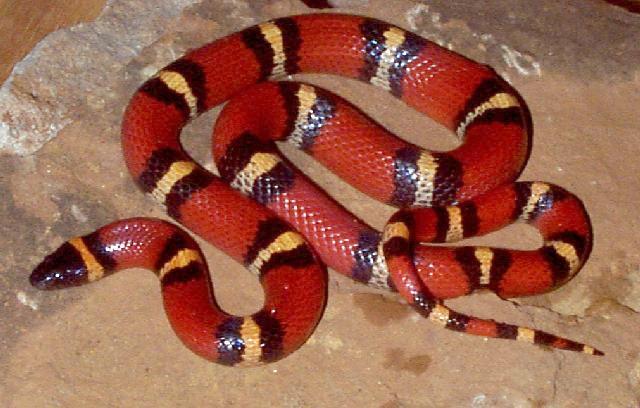
Photo by Jeff Barringer
click to enlarge |
Written By Jeff Barringer
- Coloration:
- Head:
Black head with a post-ocular band that is orange, yellow, or white followed by
a black band. The nose is often peppered white and the head is white ventrally. The iris of the
eye is generally brown, but sometimes black.
- Dorsal:
Generally 14-25 yellow, dirty white, or occasionally tangerine orange bands, bordered by black bands.
These are separated by wide rings of dark red. (Separation is appx. twice that of the Blk/Wht/Blk bands).
The black rings are wider near the mid-dorsal line. The coloration is geographically variable to an extent,
with cleaner whites to the west, dirty whites to the north and east, cleaner oranges to the south.
The red rings are brighter in the western part of the range.
- Ventral:
Ventral scales are predominantly black in the southernmost part of the range and predominantly white
in the northern part. Red does not crossover ventrally, but black bands may cross white ventrals
or white bands may cross over black ventrals.
- Behavior:
- Primarily nocturnal, becoming diurnal at beginning/ending of season.
Brumation occurs from November to February with the animals in a semi-mobile mode, with
movement occurring only on warm days/nights. During the end of February thru the middle of March
the animals will become active, males moving during the warm mistier nights. L.t. annulata
are one of the early movers in their range, becoming active nocturnally a full month before many
sympatric species such as the L.g. splendida. I personally road collected a specimen the first week
in March an hour after sundown at 58° F.
By April the females are truly active and breeding, and wandering males are seen with frequency
primarily on wet or misty spring nights. Movement is not dependant on precipitation, but it certainly
increases activity across the board. May is equally active, with activity tapering during the drier
end of the month. June thru August, activity is rare and dependant on precipitation. September and October
activity shows a slight rise as the animals prepare for brumation.
- Breeding:
- In the wild L.t. annulata normally breed in March and April after their second post brumation slough.
Combat between males is a common occurance. The female will aggressively tail rattle, and bolt from an aggressive
male if she is not ovulating. Females appear to cycle for approximately 2 - 4 weeks and will passively
accept a a male during this time. During this cycle they will travel laying down a pheromone trail to attract a mate.
The males will move at this time in search of the trails. Once located, the male will position his body on top of her's
trying to force her to lift her tail. The male will frequently bite the female behind the head and using this
grip to pin the female down during copulation.
Approximately 40 to 55 days later the female will deposit 4 - 8 elliptical, adhesive shelled eggs 1.20 to 1.50
inches long. L.t. annulata has been known to double clutch, though this is generally an exception
rather than the rule. Record clutch sizes of 11-13 eggs are known. There is some evidence that
breeding may occur as early as February, and it is also possible that L.t. annulata may retain
active sperm over the brumation cycle. Gravid specimens have been collected as
early as March and as late as July. After 55 - 65 days the eggs slit and the young emerge, generally over
a 24 hour period. The hatchlings should have a post-hatch slough 7 - 10 days later.
Males are known to wander substantial distances during the spring breeding season, and are collected during the entire
February - October season.
Females are collected primarily pre-copulation and post-partem and rarely at any other time.
- Range:
- South Central Texas, South Texas. Southern Tamaulipas Mexico, Nuevo Leon Mexico, Eastern Coahuila Mexico.
- Habitat:
- Primarily the South Texas thorn scrub of mesquite, but also found in the sandier coastal areas,
the cedar break hillsides of South Central Texas, and also the sotol/lechugilla of the Eastern Chihuahuan
Trans-Pecos area.
- Prey:
- Mostly rodents, but also known to take many types of endemic lizards. Food items are also known
to include frogs. Although L.t. annulata are prodigious climbers, they are not known
to climb even the low thorn scrub in the wild so any birds eaten would probably be ground nesting species
. To my knowledge no one has ever collected/seen an L.t. annulata in a tree or bush.
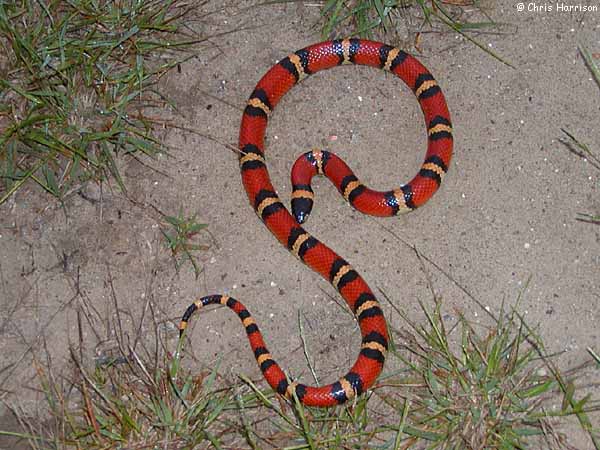
Gallery Photo by Chris Harrison
Click to Enlarge |
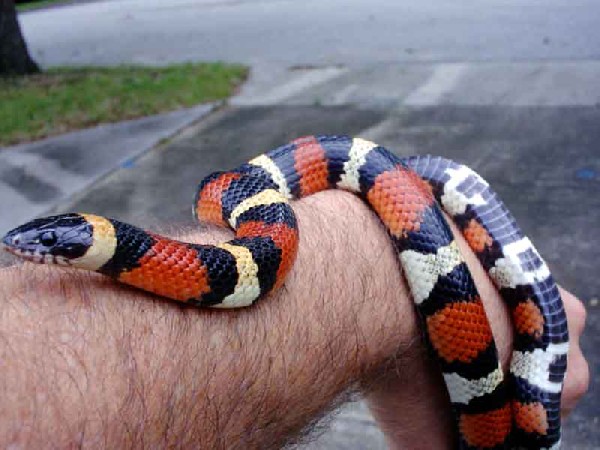
Gallery Photo by mbdorfer
Click to Enlarge |
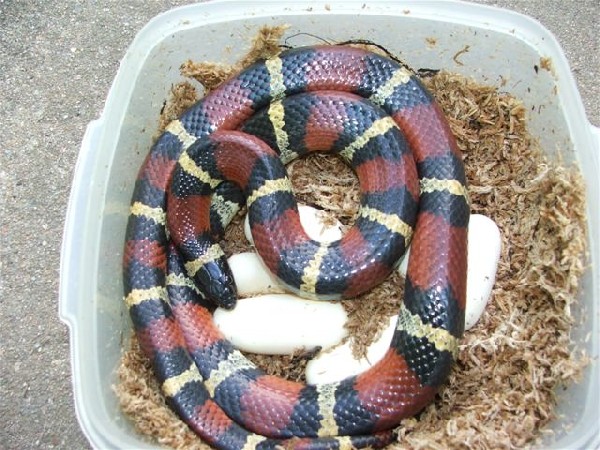
Gallery Photo by John Fraser
Click to Enlarge |
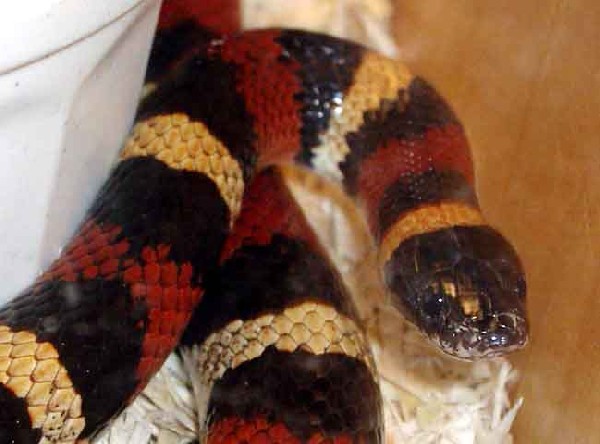
Gallery Photo by mbdorfer
Click to Enlarge |
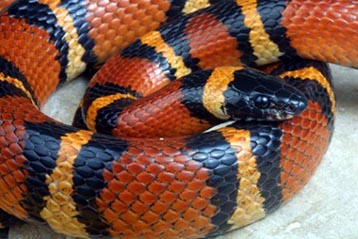
Photo by Gerold Merker
Click to Enlarge |
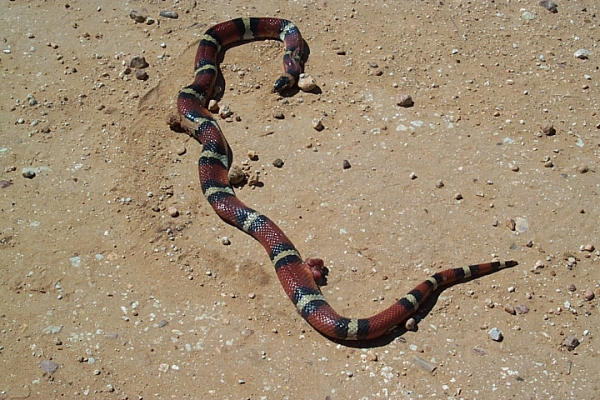
Photo by Jason Penny
Click to Enlarge |
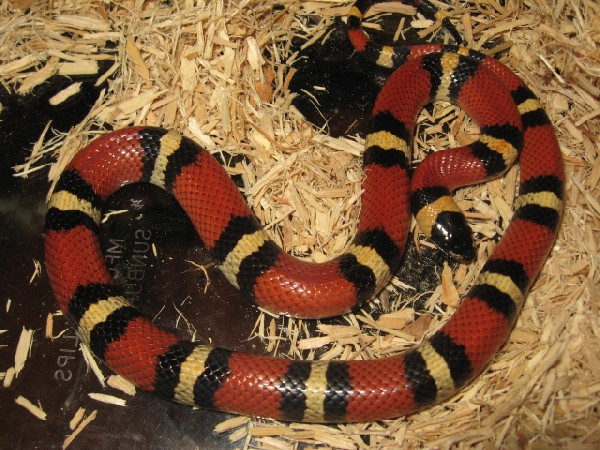
Photo by Patton
Click to Enlarge |
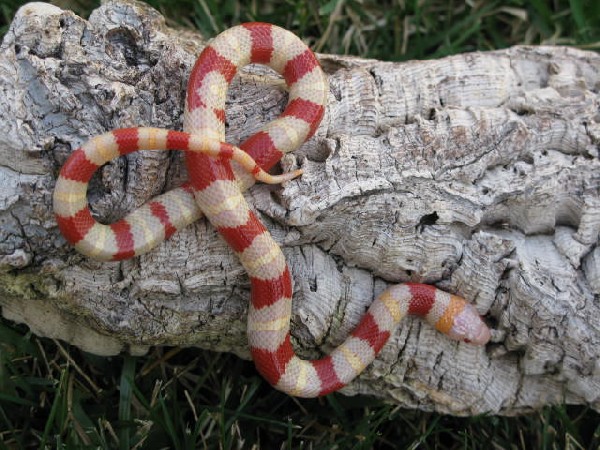
Photo by hardyreptiles
Click to Enlarge |
|
|
Sponsored Link
New & Updated Business Listings
Looking for a reptile or amphibian related business? A reptile store, breeder, importer,
maunfacturer or supplier? Our business directory lists some of the most popluar herp businesses in the world.
| Locate a reptile or amphibian business by name:
|
|
Recent Milk Snake Forum Forum Posts
• I'm here, too!, posted by Sunherp
• Kingsnake lives!, posted by exposito
• Hey Everybody, I'm here., posted by AaronBayer
• Scott Ballard Provided A Wealth Of Info, posted by Ameron
• Central America Milksnake Dilemma, posted by Ameron
• Retun to Forum / New Stuart's Milksnake , posted by Ameron
• Eggs ok?, posted by highley1980
• Splotched Sinaloan Variety, posted by bslugger551
• Splotched/Bullseye Sinaloans, posted by bslugger551
• Is my milk snake is getting TOO HOT?, posted by darbellah
• New owner looking for advice, posted by Irishfran
• New adoption biting and chewing fingers, posted by ajcur17
• Help*** Our milksnake won’t eat., posted by KieranSnake
• "trouble" with my milk snake, posted by kedjkd
• L. annulata (Mexican Milk) temps, posted by JJJ
Recent Milk Snake Classifieds:
- WANTED Milksnakesall spe...
- 4 foot Sinaloan Milksnak...
- 10 Adult Pueblan milk
Banner Pool
Snake Forums
Launched in 1997, the kingsnake.com message board system is one of the oldest and largest systems on the internet. Here you may share and discuss information with others about your favorite reptile and amphibian related topics such as care and feeding, caging requirements, permits and licenses, and more.
Click a link below to visit a forum or a tab above to see more forums.
|
Enter a keyword to search. Search in: |
Search Tips - More - Old forum archives
Snake Forums
Lizard Forums
Launched in 1997, the kingsnake.com message board system is one of the oldest and largest systems on the internet. Here you may share and discuss information with others about your favorite reptile and amphibian related topics such as care and feeding, caging requirements, permits and licenses, and more.
Click a link below to visit a forum or a tab above to see more forums.
|
Enter a keyword to search. Search in: |
Search Tips - More - Old forum archives
More Forums
Launched in 1997, the kingsnake.com message board system is one of the oldest and largest systems on the internet. Here you may share and discuss information with others about your favorite reptile and amphibian related topics such as care and feeding, caging requirements, permits and licenses, and more.
Click a link below to visit a forum or a tab above to see more forums.
|
Enter a keyword to search. Search in: |
Search Tips - More - Old forum archives
Venomous Forums
Amphibian Forums
Turtles & Tortoises
General Forums
|





.jpg)














